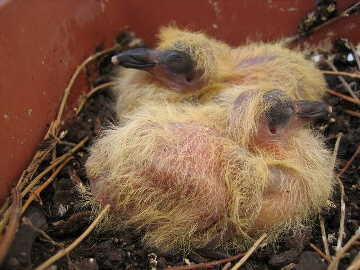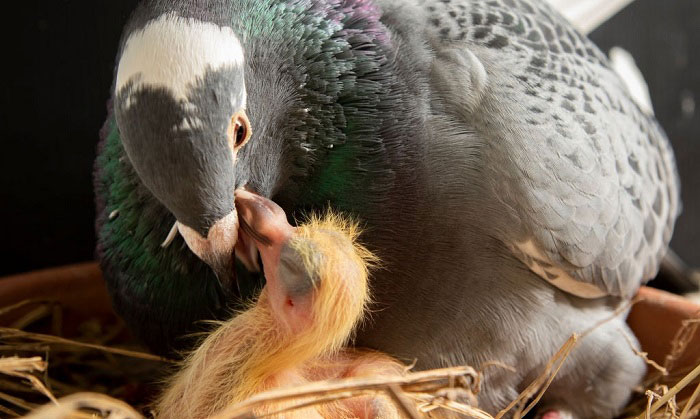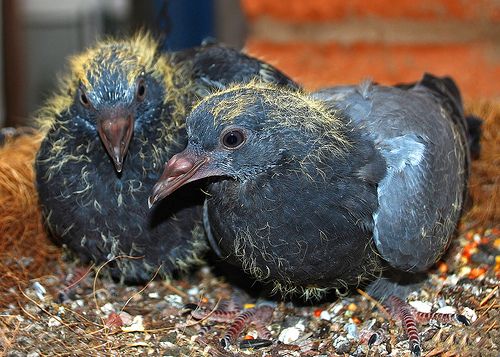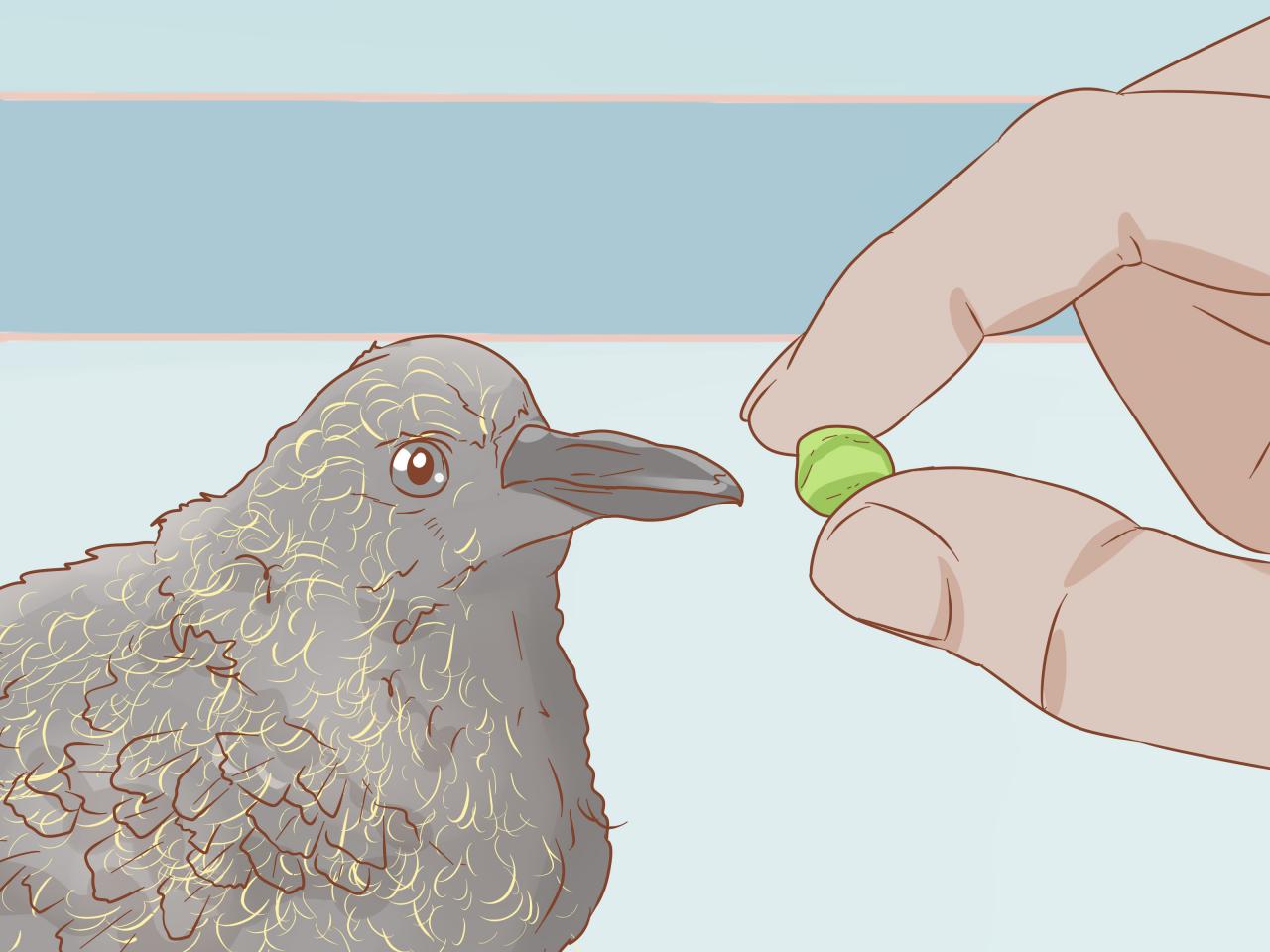Pigeon is an iconic everyday neighbor of humans. Some people think of pigeons as an aggravation, while others consider them a romantic part of urban life.
Baby pigeons are fragile, small, and vulnerable with strange twisted beaks and spiky growing feathers like all baby birds. These squabs also have unique nutritional requirements. You generally don’t find baby pigeons in your surroundings because these squabs leave the nest looking almost like adults. It means if you have found one, he is probably in need of your help to survive.
What can baby pigeons eat?
Pigeon parents feed “crop milk” (partially digested liquid) to their babies directly from their mouths. This crop of milk is very nutritious for squabs. It is chocked full of immune boosters and antioxidants required by baby pigeons.
Baby pigeons are easy to handle and feed, and they just need to get habitual of the procedure. Fledgling pigeons are easier to manage than young birds because they don’t need to be fed frequently than newly hatched birds.
Maybe you think that baby pigeons eat worms, or you might want to give them dairy milk just like other baby animals. Both concepts are completely wrong. These items are unsafe for squab and don’t provide the required nutrients essential for baby pigeons’ growth.
In the early 12 hours of their life, just after hatching, they need rest only, and there is no need to feed them. But once they awake, you have to feed them every couple of hours. When you try to feed baby pigeons, make sure to give them food similar to “Crop Milk” in nutrients and consistency. Don’t forget to thicken the formula gradually and also increase the quantity as the days go by.
What to feed baby pigeons?

There are a few options you can choose from to mimic the “crop milk” for baby pigeons:
Formula products:
You can search for pigeon-hatchling hand-rearing formula products from the pet supply store. There is a variety of formula products available with a little difference. Read the instructions and ingredients carefully before buying any one of them.
Formula food alternatives:
If you have no hand-rearing formula food, you can use a few other options, but these options may not provide your baby pigeons’ required nutrition. Talk to your vet before using any of the following options:
- Baby formula
- Oatmeal
- Cat or Puppy biscuits softened in water
- Fruits and vegetables soft small pulp balls with added breadcrumbs to bind
NOTE: it is better to get advice from a veterinarian about pigeon hatchling formula food for squabs.
The right way to feed baby pigeons:

Offering food to the baby pigeon is not an easy job to perform. You have to follow the natural method of parent pigeons. Naturally, baby pigeons insert their beak into the mother or father pigeon’s beak to receive crop milk.
You have to do this similarly. You can similarly do this with the help of a syringe. You can also use a small baby bottle or a plastic bag instead of a plastic syringe. Now, wait for the squab to open their beak and transfer the food into its crop gently.
NOTE: Baby pigeons start feeding themselves within 20 to 25 days after hatching out of the egg.
Risks of hand-feeding method:
This hand-feeding method is different from the original method, so you must be attentive during feeding. The baby pigeon may find this method difficult first.
If you find your pigeon baby breathing through an open beak, or you may observe any other kind of distress, take a break and give the bird a chance to get relaxed before feeding it again. Try to adjust the feeding method and time according to the stress level of your baby bird.
Never ignore stress conditions in a baby pigeon. Otherwise, too much stress in a baby pigeon may result in a heart attack.
How much feed is enough for a baby pigeon?
Knowing the right amount of feed enough for a baby pigeon is as important as what and how to feed a baby pigeon. Here the main trick to get success is the correct estimation of the pigeon’s crop.
Baby pigeon’s crop appears flat when it is empty, and you find baby pigeon chirping for food. These are the indications of hungry squab.
Crop size for all pigeons is not always the same, but it is differently sized. Observe the crop of your bird keenly and stop feeding when it feels a little squishy and soft. You have to fill this crop with about three-quarters full of food. Over-feeding your pigeon bird can be deadly, so you need to pay proper attention while feeding a baby pigeon.
It is good to allow the pigeon crop to empty that will take at least 24 hours. Otherwise, overfilled crops may result in pockets with trapped food that lead to sour food, and it can risk your baby pigeon’s health.
NOTE: You can observe small bubbles present on the baby pigeon’s shoulder. These bubbles appear filled up when your baby pigeon had enough to eat.
Water for baby pigeons:

Water is necessary for all living things, and animals drink water in any form to remain hydrated. Baby pigeons also need water to survive. In the case of a drinking crop, milk baby pigeons get enough water to avoid dehydration. When they start feeding themselves, then they feel the need to drink water.
If you find that a baby pigeon is not starting to drink water by instinct, you have to feed it water. You can use an eyedropper to feed water to the pigeon. When the pigeon starts feeding itself, you can place a bowl of water for it to drink from.
Conclusion:
It is now obvious to you that baby pigeons grow upon a diet called “crop milk” directly from the mouth of their parents. This nutritious milk regurgitated into the beak of the baby pigeon.
If you want to feed a baby pigeon, you can provide it a pigeon hatchling hand feeding formula milk. This is a substitute for their natural food. You can also use cat or dog biscuits dissolved in water or baby formula. Still, it cannot provide proper nutrition to your baby pigeon.
